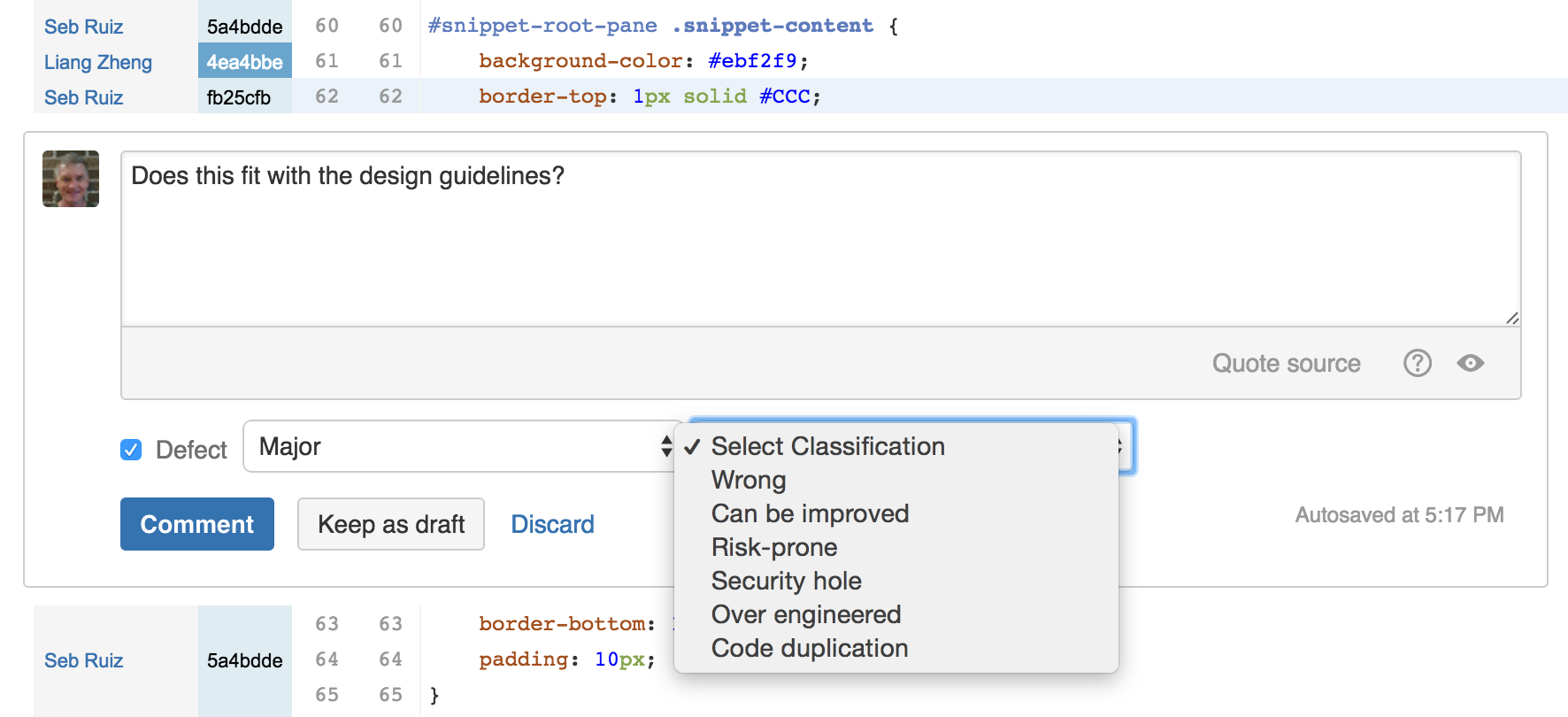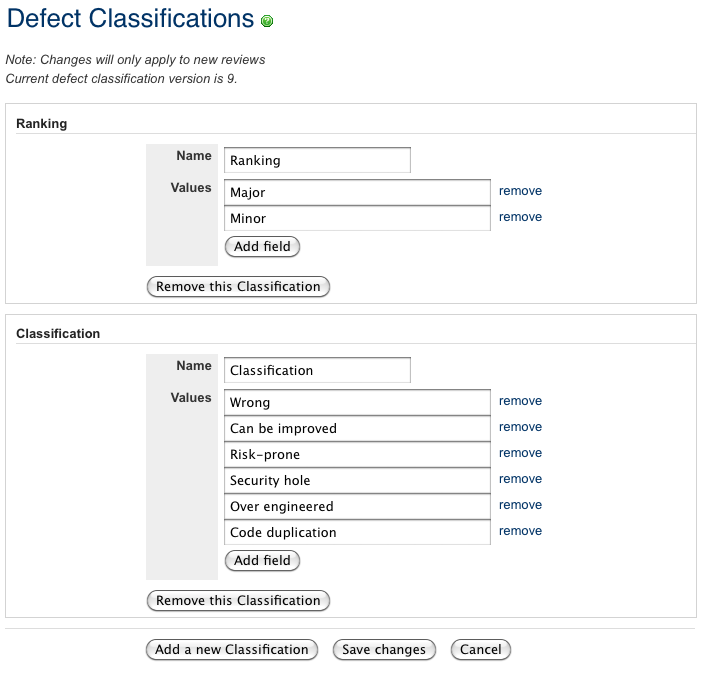Customizing the defect classifications
Defects in Crucible comments
Defects are comments made by reviewers that indicate a problem in a review. Defects can be classified by rank and type. Custom classifications can also be defined. The default classifications are shown in the screenshot below.
Changing classification settings
Only Crucible Admin users can edit defect classifications.
To change the default classifications:
- In the Admin area, click Crucible under 'Global Settings'.
- Click Edit Defect Classifications.
- You can add and remove classifications, and add fields to, or remove fields from, classifications.
Any changes made to defect classifications will only apply to reviews created after the change is saved.
Screenshot: Editing defect classifications in Crucible
Default Crucible classifications
There are two default defect classifications that are preset in Crucible: Ranking and Classification. These settings (and their sub-categories) can be edited or removed; other custom classifications can be added.
Ranking
Crucible users can rank a defect as Major or Minor, indicating the importance of the defect.
Classification
This setting helps to provide more detail about the defect. This classification can be set to one of the options described in the following table:
Value | Description |
|---|---|
Missing | The defect applies to code or information that is missing (absent). |
Extra (superfluous) | The defect applies to code or information that should be removed. |
Ambiguous | The defect applies to code or information that is not clear or easy to understand. |
Inconsistent | The defect applies to code or information that is applied in several different ways. |
Improvement desirable | The defect applies to code or information that needs to be revised. |
Not conforming to standards | The defect applies to code or information that breaks established conventions. |
Risk-prone | The defect applies to code or information that takes unacceptable risks. |
Factually incorrect | The defect applies to code or information that is wrong. |
Not implementable | The defect applies to code or information that may be impossible to create. |
Editorial | The defect applies to code or information where the classification as a defect may be subject to personal opinion. |


